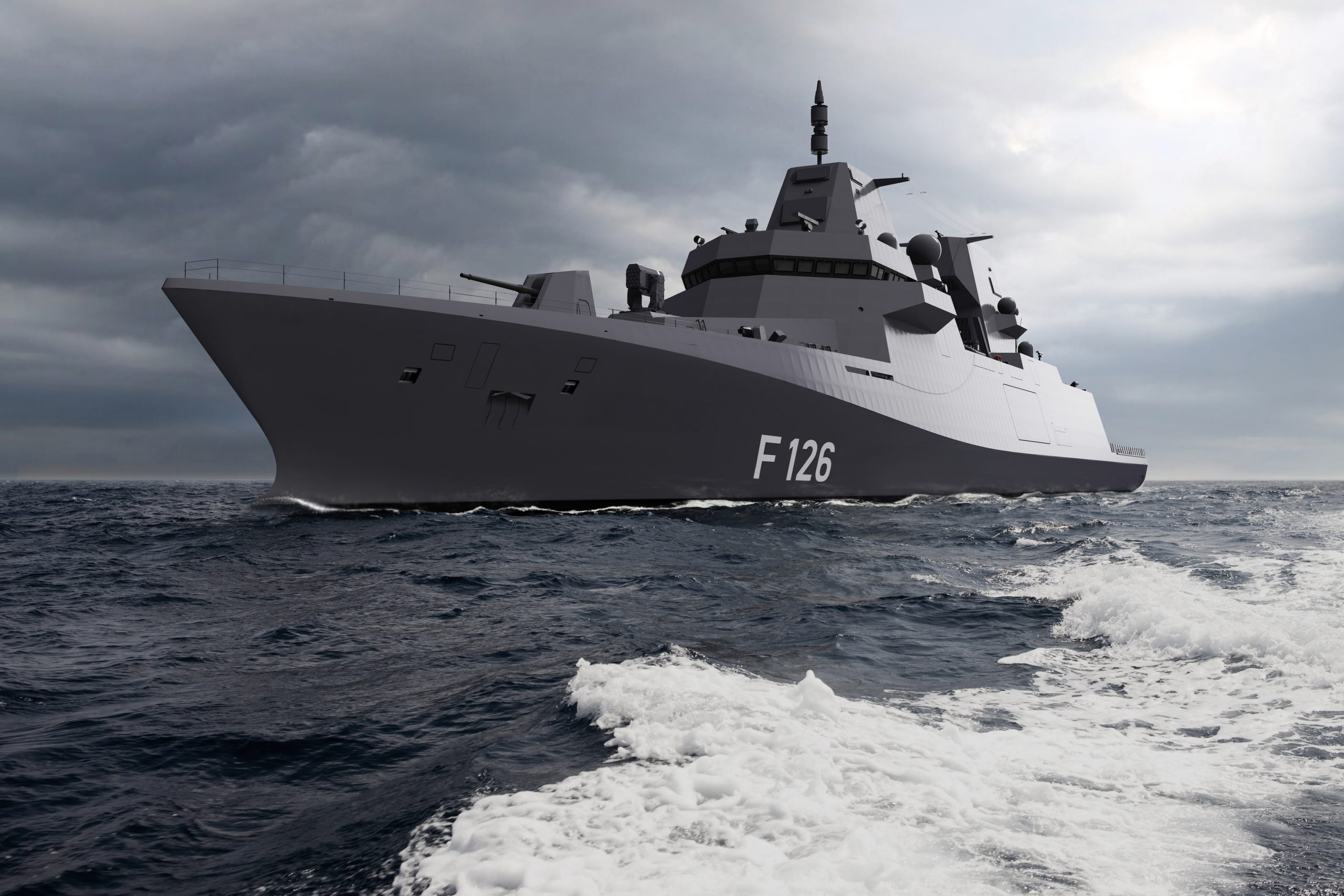Damen Schelde Naval Shipbuilding is building four new frigates for the German Navy. It is one of the largest procurement projects in the history of the German Navy. SWZ|Maritime’s naval expert Jaap Huisman takes a closer look at the design and explains why it is truly a multi-mission frigate.
SWZ|Maritime’s June 2021 issue featured a navy special compiled by our navy expert Jaap Huisman. This article is one of the articles featured in this special.
The Federal Office of Bundeswehr Equipment Information Technology and In-service Support (Das Bundesamt für Ausrüstung, Informationstechnik und Nutzung der Bundeswehr (BAAINBw)) and Damen Schelde Naval Shipbuilding signed the contract for the construction of the MKS 180, now named F126, for the German Navy on 19 June 2020. This vessel type will replace the F123 Brandenburg class frigates. The contract comprises the supply of four ships from 2028 to 2031 with an option for two more beyond 2032.
The signing of the contract is the result of a European tender issued by the BAAINBw in 2015. Damen, together with its partners Blohm+Voss, a subsidiary of the Lürssen Group, and Thales, was declared the winner of the five-year tender. Together with its partners and involving German Naval Yards Kiel, Damen will handle the order in a way that about eighty per cent of the total net investments will remain in Germany. The ships will be built at Blohm+Voss in Hamburg, involving other Northern German shipyards in Bremen, Kiel, as well as in Wolgast and thus 100 per cent in Germany. The main contract also includes logistic services and multiple land-based test and training sites.
Thales mission and combat system
In November last year, Thales received a subcontract from main contractor Damen to deliver the mission and combat system for the frigates. About seventy per cent of the services will be provided by Thales Deutschland, for example at the locations in Kiel and Wilhelmshaven, and by several German subcontractors [1]. The partnership between Lürssen Werft and Damen, both family owned shipyard groups, could be interesting and promising for the future of the German-Dutch cooperation in naval shipbuilding.
Interesting to note is that a Letter of Intent was signed in December 2020 by the Secretaries of Defence of Germany and the Netherlands to cooperate on the future replacement of the current air defence frigates.
Also read: German-Dutch naval construction: Setting out a new course together
In-house studies
The preliminary MKS 180 design studies started in 2009, for example by MTG. The working title described very well what the purpose of this frigate is: The ship must be able to fulfill several roles, also at the high end of the violence spectrum. The key word is “mission modularity”: ‘The German Navy, increasingly tasked with conducting long overseas deployments, wished to obtain flexible ships that could be rapidly modified depending on need’ [2].
The frigates ‘will also be able to stay at sea for up to two years without requiring maintenance at port, with crews rotating to and from the deployed ship every four months. This capability is expected to allow for a more efficient use of hulls by reducing the time spent during transfer from Germany to conflict zones such as the sea off the Horn of Africa where German ships (as did fellow Dutch Navy ships, Ed.) repeatedly took part in counter-piracy missions such as EU Operation Atalanta, patrolling large areas for a long time’ [2].
Also read: Hamburg Ship Model Basin to test German frigate design for Damen
The requirements were officially established in March 2013. After design studies, an interesting analysis phase was planned (I was invited as a Dutch observer). In this phase, three designs were analysed in-depth down to the last detail on the basis of a systematic catalog of all requirements: One design fulfilling all requirements and two other less expensive ones fulfilling them partially. In a number of meetings with all disciplines and expertise available, under strict leadership of the project manager Dr Braun, all kinds of aspects were considered, such as operational performance, life cycle cost, survivability, risk analysis and cyber security, and whether or not the designs complied with the many rules and regulations on things like accommodation.
In retrospect, partially complying was not a real option because regulations have to be adhered to and any risks avoided. On June 8, 2015, the fully compliant design was selected.
European tendering
In the same year, 2015, a unique European tendering process was opened to start with an information day in Koblenz where all European yards were invited and some observers including a Dutch delegation. After some time, three bidders remained: BAE Systems and German Naval Yards, Damen and Blohm & Voss, and ThyssenKrupp Marine Systems and Lürssen.
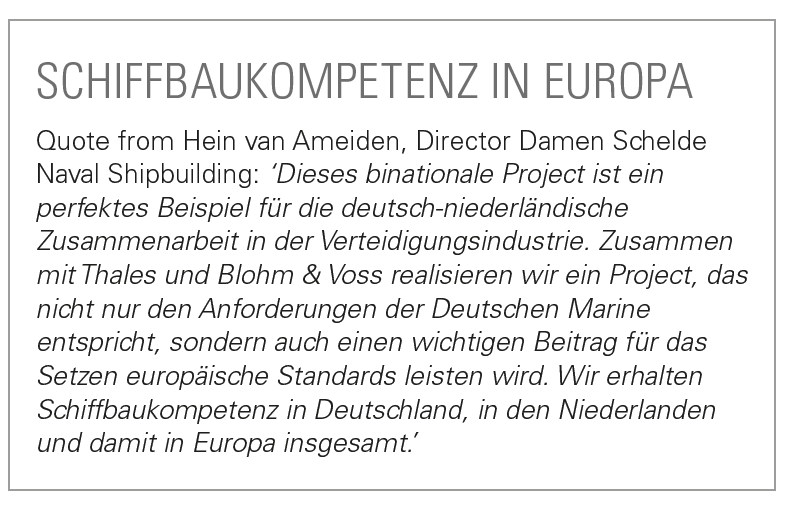
In 2017, BAE offered their Type 26 and ‘withdrew from the tender’. And after five long years of complicated negotiations and developments in the German industry, Damen won the tender. The project will be managed by Damen Schelde Naval Shipbuilding.
The F126 design
The vessel will have an overall length of around 160 metres and displacement of over 9000 tonnes. It is to have the capacity to accommodate up to 114 crew members and will also be equipped with eighty additional berths. The frigate will have to operate in a three dimensional scenario, for example, counter-piracy, long time patrolling, enforcement of embargo, escorting merchant ships, commanding of a task group, and support special forces.
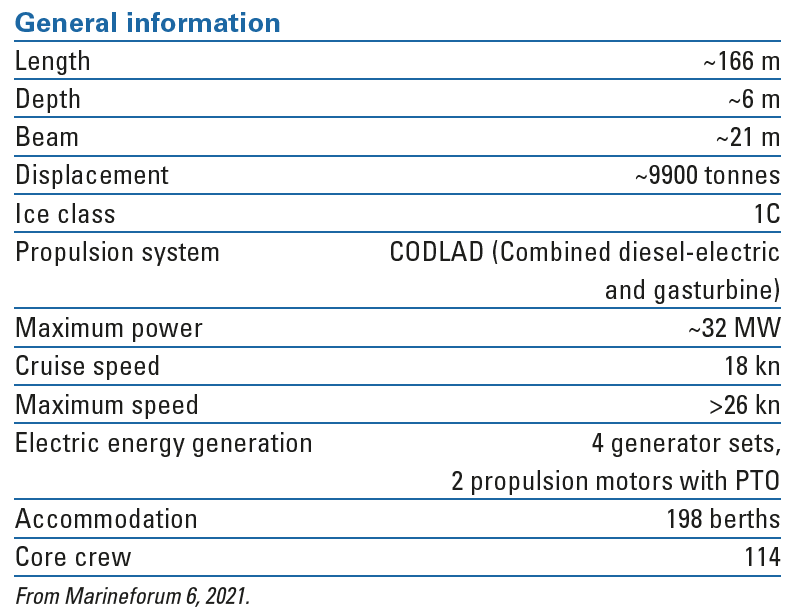
The mission and combat system will include the Tacticos combat management system and Above Water Warfare System (AWWS) fire control cluster. The AWWS is an advanced warfare suite, which enables countering and neutralising complex saturation attacks (developed by Thales for the Dutch and Belgian ASWF class as well).
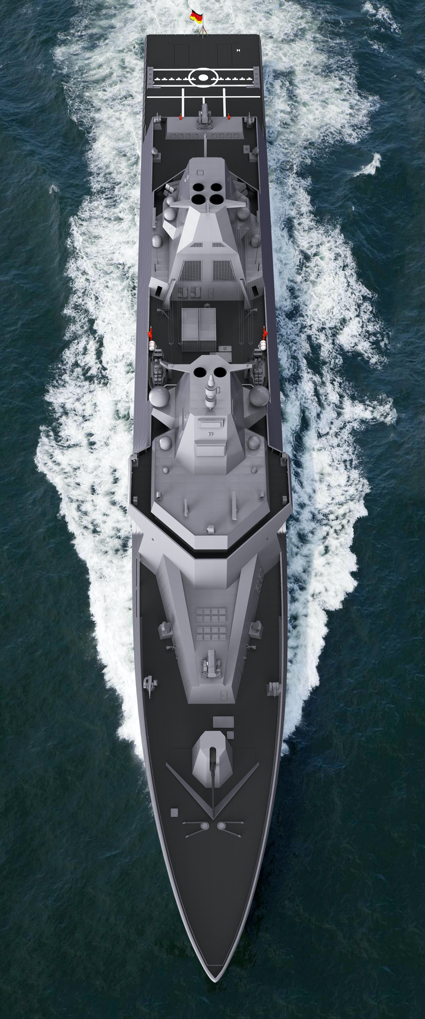 The ship will be equipped with the following sensor systems; the Hensholdt TRS 4 D (C band) and the Thalus APAR block 2 (X band). Furthermore, the frigate will have the Thales Gatekeeper, a non-rotating (IR/TV) system and Mirador MK2 EO tracking and observation system installed. It will also be equipped with KORA C-ESM and R-ESM electronic warfare sensors.
The ship will be equipped with the following sensor systems; the Hensholdt TRS 4 D (C band) and the Thalus APAR block 2 (X band). Furthermore, the frigate will have the Thales Gatekeeper, a non-rotating (IR/TV) system and Mirador MK2 EO tracking and observation system installed. It will also be equipped with KORA C-ESM and R-ESM electronic warfare sensors.
The F126 frigate will be armed with a 127-mm main gun with Vulcano extended-range precision ammunition, the MK41 (32 cells) vertical launch system (VLS) for ESSM Block 2 missiles, a Service to Service Missile (SSM) system where among others the Naval Strike Missile (NSM) is mentioned and a RAM close-in weapon system (CIWS). It is to be fitted with water cannons, heavy machine guns, and light marine guns as well.
The flight deck and hangar will be suited for two helicopters such as NH90s or combinations with an H/C and UAVs such as the Skeldar V200 VSTOL with all related equipment, maintenance facilities, spare parts and ammunition.
Besides these permanent sensors and weapons, the frigate can be equipped – dependent on its mission – with several modules at special designed “flex decks”, with the necessary provisions. One flex deck will be located below the flight deck at the stern and can be loaded from above by using an external crane. The other two flex decks will be located in the superstructure and can be accessed through an on-board multi-purpose container crane.
The following mission modules can be installed:
- Electronic warfare systems;
- Towed array system for anti-submarine warfare;
- Mine countermeasure capability & decompression chamber;
- Containers with the required provisions; and
- A module for detention.
The frigate will further be equipped with two large RHIBs capable of speeds in excess of 36 knots with both launch and recovery systems that can be used simultaneously.
Naval protection forces/marines can also be accommodated with all their provisions such as armoured positions with night vision goggles and so on.
The vessel will be equipped with a decoy system with launchers to cover the entire electromagnetic spectrum (radar, IR and laser) and a system to detect warfare agents. Armour will be placed to protect ammunition storerooms and command and control centres against hard core fire of 12.7 mm.
Intensiv Nutzung, two years at sea
The operational profile of these frigates asks for long-term deployment at sea at a greater distance from the home port. It is required that the vessels can be at sea for two years without calling at a port with a relatively small core crew of 110, whereby the crew will be changed every four months.
This requires a high degree of automation for all systems while these (solid) systems require as little maintenance as possible for the longest possible intervals. “Tele-maintenance” will be important for online diagnostics and information and instructions for repair by for example virtual reality. All maintenance management data must continuously be available.
Compared to other recent frigates, the F126 is relatively large. This is partly due to the high standard of accommodation and userfriendliness of the ship in order to be attractive for personnel to serve on it and to be able to compete with merchant shipping standards.
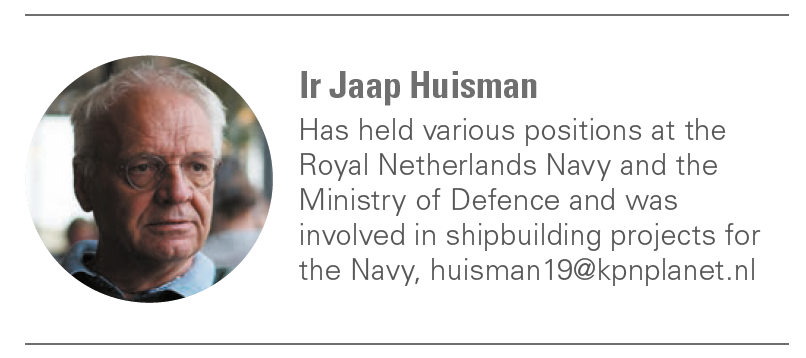 Conclusive remarks
Conclusive remarks
The MKS 180 is now officially renamed F126. It will be known as a true multi-mission, versatile and flexible warship that will be able to cope with rapid technological developments. The spacious design and flex decks allow for several missions and any unmanned system to be operated.
References
- Text and information from different company websites.
- Wikipedia MKS 180 frigate.
Also read: SWZ|Maritime’s June 2021 issue: Warships for a new world of threats


